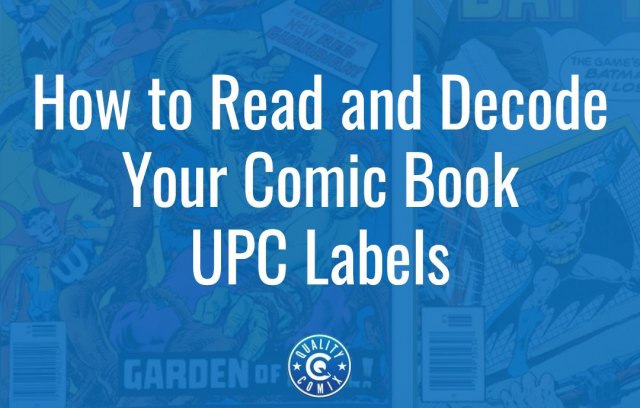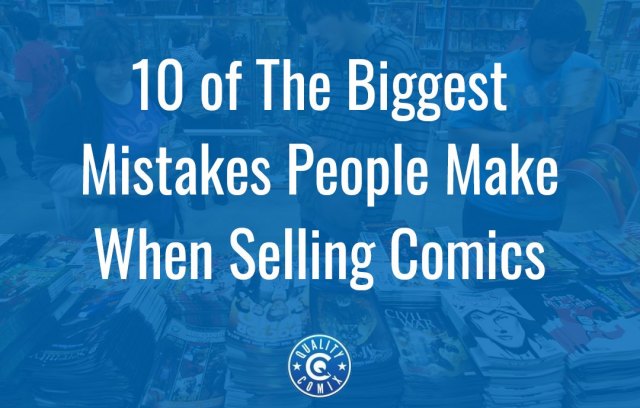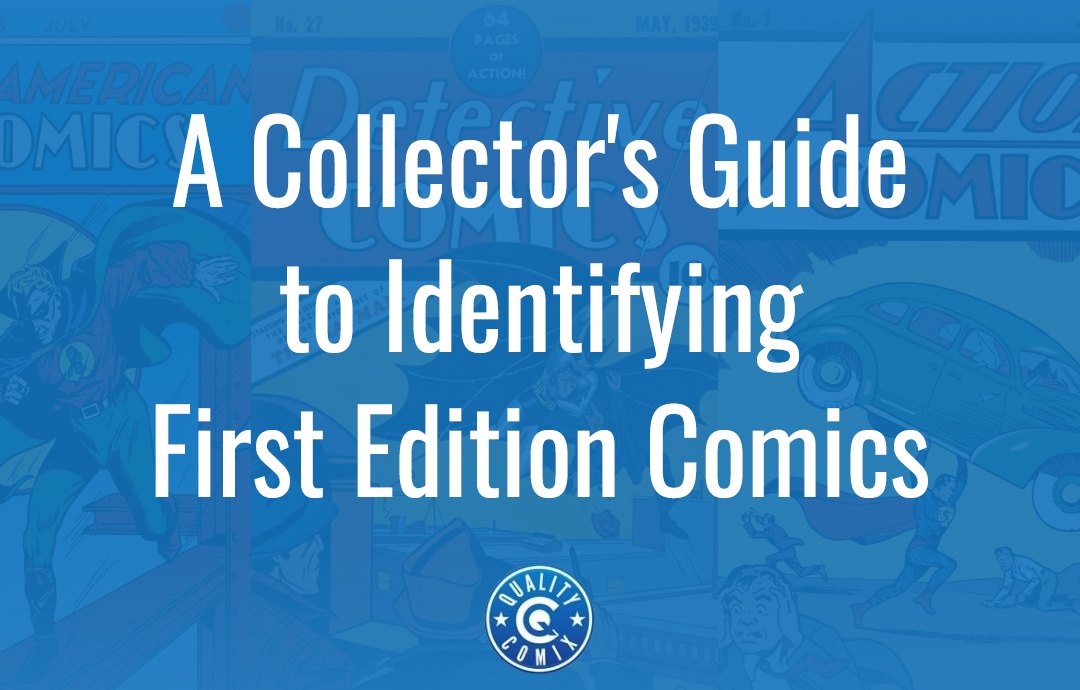
In the book-collecting world, first editions are often much more valuable than subsequent editions of the same book. But does the same hold true for comics? Let's talk about it.
Table of Contents
What is a First Edition Comic?
A first edition is the first time something is produced. All subsequent productions are reproductions, whether it's a second print run immediately following the first or another print run years or decades later. So, a first edition comic is part of that first run of production of the comic. That holds true just the same whether it's an indie comic printed out on printer paper using a home inkjet and bound up with staples or a mass production from modern Marvel or DC with millions of copies produced.
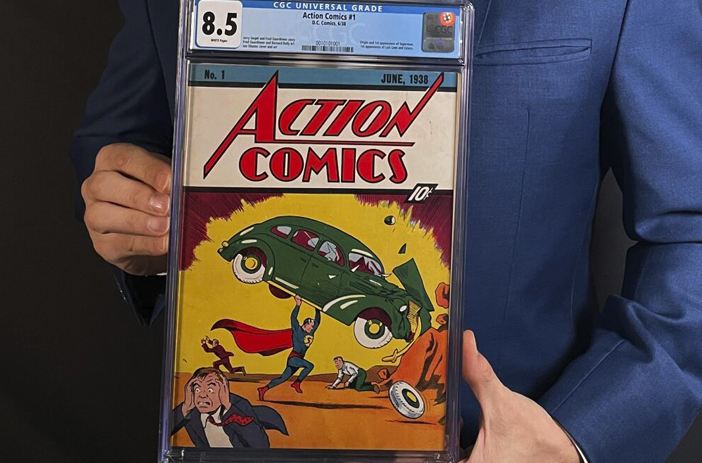
One thing a first edition is not is issue #1. The first issue of a comic is its own beast, usually a key issue, and often at least slightly more valuable than later issues unless those issues are also keys for one reason or another. First editions can be any issue number.
First Edition vs. First Printing
There is, technically, a distinction between the first edition and the first printing.
Typically, a first edition is the first configuration and review of a book. The copies produced in the first print run are just that: the first print run of the first edition. If the first print run proves to be inadequate to fill demand – say, 50,000 copies are produced and sell out quickly with demand remaining – another print run can be ordered.
A second print run using the same configuration of the book will be just that: a second print run of the first edition.
A second printing can vary from the first printing. Since they're produced at different times, different conditions can lead to differences in production. Maybe the ink is slightly off, so the colors are different. Maybe the alignment of the printing plates is different, so certain colors are slightly shifted compared to the original. Or maybe, in more extreme cases, an error with the first printing is corrected for the second printing.
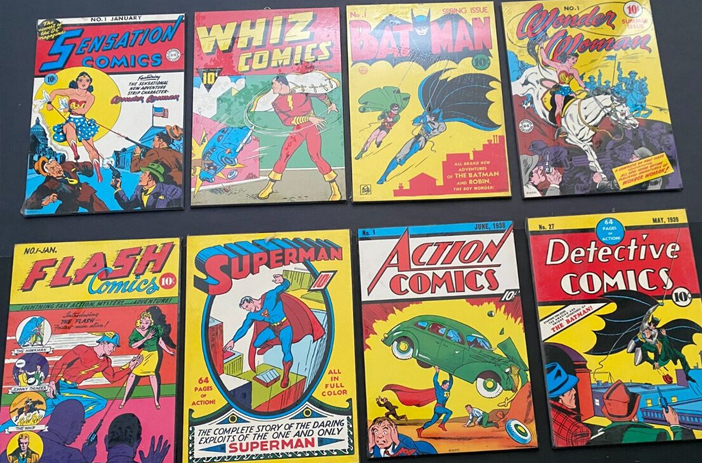
Image source: eBay
A second edition is usually when a more serious review is conducted. This might involve changes to the art, the writing, or the layout and will often include different non-comic material, like different ads throughout the book.
Second editions typically don't come right away. They might be a reissue produced months or years later, or they may be a throwback or retro printing made decades later. There's a famous set of examples that I'll go into later.
All of this is knowledge that crosses over from books to comics, and it's a lot more, shall we say, fuzzy in the world of comics. Some comics use editions in place of printing, for example. And, in cases where the printing is identified, it may be called an edition, even if it's technically just a printing. We'll get more into that in a bit as well.
Do All Comics Have First Editions?
Yes. It's not like a comic can skip to a second edition or a second printing without doing the first. Now, a comic starting at issue #2 as a gimmick would be possible, but not printing.
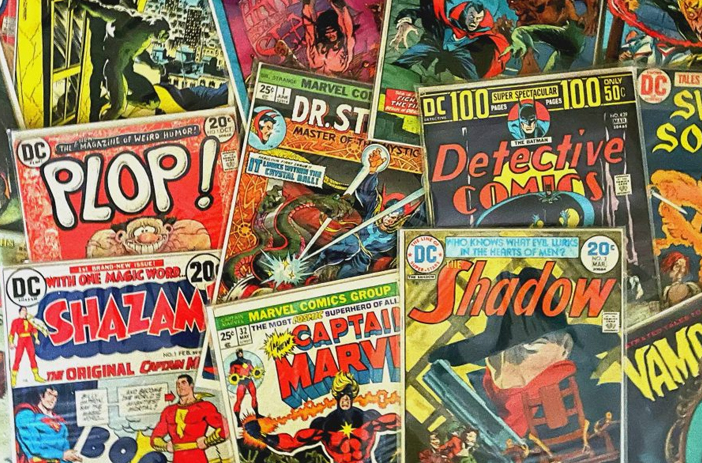
Image source: 50 Year Old Comics
That's not to say that first editions or first printings are always the most common. There are a few reasons why a first edition/printing might be more sought-after and rarer than subsequent versions.
- The first print included something objectionable. I write more about this in the recalled comics section of this article; basically, whether it's unintended nudity, offensive content, or something else objectionable, the first edition of the comic is recalled and destroyed, which leaves it much rarer than subsequent, error-free, edited printings.
- The first print run may be much smaller than later print runs. This can happen for new pilots; creators might become unexpectedly popular, so a reprint of their first issues is produced, but the originals hold more value as collector's items from "before it was cool."
- Errors may be corrected. There's a small but intense market for error and misprint comics, particularly when the error is significant. Errors are often either limited to small print runs or to partial print runs as the error is noticed and corrected, and quality assurance identifies and destroys faulty copies before they make it to sale. Any that slip through, often from first printings, may be more sought-after.
Regardless, the truth is that virtually all comics these days only have one edition, so it can be relatively rare for the edition of a comic to matter much.
So, how can you tell whether or not a comic is a first edition?
Identifying First Editions Method One: Barcode
The first option is to look at the barcode. Barcodes on comics tell you a lot. I go into barcodes on comics in much greater detail here, but here's what's important about editions.
"If you look at a comic book barcode box, you'll see something you don't see on most other products: a second, smaller barcode.
What's this one, then? It doesn't have as many numbers, and it's a lot smaller, but it still uses the same formatting of lines with numbers. That's because it's still machine-readable numerical code, but it's publisher-specific and not part of the universal product code registration.
This smaller barcode is used by publishers to encode specific information about the comics. Typically, it's five digits long, and those digits tell you a lot about the comic.
The first three digits are the issue number. The first issue of a story will be 001; the tenth issue will be 010; the 450th issue will be 450. Simple and easy.
The fourth digit is usually the cover number. When comics publishers started printing a bunch of different cover variants, each one of those would need to be tracked individually. Since there's not enough room in the standard UPC for that variation, this secondary code tracks it. Note that some more ridiculous instances of variants don't track this way, like the infamous Amazing Spider-Man Issue #666, which had 145 different variants; most of the variants don't have a barcode.
The fifth digit is often the printing number. If there are multiple print runs of a given comic, this is the number used to differentiate them. Even if the comics are otherwise identical, this differentiation allows for tracking any issues with the print run, its distribution, or other details."
So, to identify the first edition of a comic, you would look at this small barcode and, specifically, the last number. This number will be the printing, and anything other than a 1 will tell you that it's not the first edition.
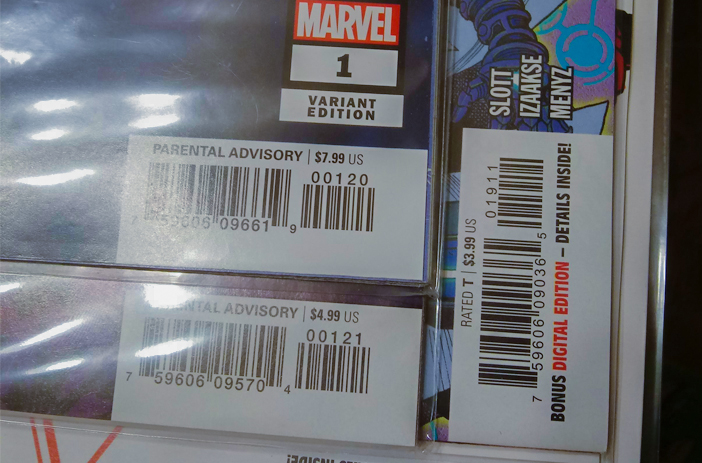
Image source: Reddit
One huge caveat here is that this isn't always true. Different publishers use different patterns, and they vary over time; the patterns and meanings of the numbers aren't always the same from decade to decade.
The other huge issue with this identification method is that not all comics even have barcodes. The two biggest reasons why a comic might not have a barcode are that it's too old (which, unfortunately, are the ones you're most likely to want for their value) or that it's a direct edition with art or something in place of a barcode. Obviously, it's pretty hard to identify the printing of a comic based on the barcode if there is no barcode.
Identifying First Editions Method Two: Printing Differences
The second option, and the one you're more likely to be using for early pre-barcode comics, is printing differences. A first edition and a second edition are likely to have differences in printing. It might be something as subtle as certain colors being off in placement or tone, or it might be something as significant as changed art or colors across a comic.
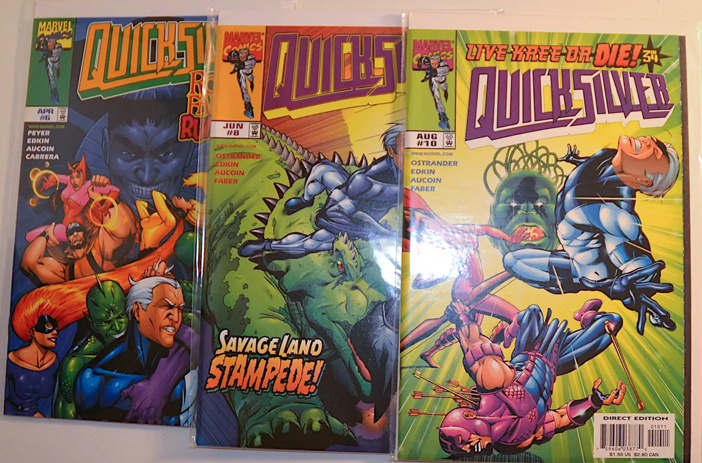
Obviously, this is only relevant in cases where significant differences exist. Many comics either don't have second editions at all, or the second editions are more or less identical to the first, so there's no reliable way to tell them apart. In these cases, though, there's really no reason to seek out differences; they won't sell for anything different anyway.
Identifying First Editions Method Three: Copyright Dates and Other Info
Most comics, books, and other media published in the last few hundred years have some form of information about the printing somewhere in the media itself. Books have pages at the start that tell you about the publishing house, the copyright date, the edition, and more. Comic books are similar.
Collectively, this information is known as the "indicia," which is Latin for distinguishing marks. Comic book indicia typically includes the publisher, names of important people like the editor, writer, artist, inker/penciller, editorial consultants, and even CEOs, addresses for the publisher's HQ, disclaimers, rights reservations, and so on.
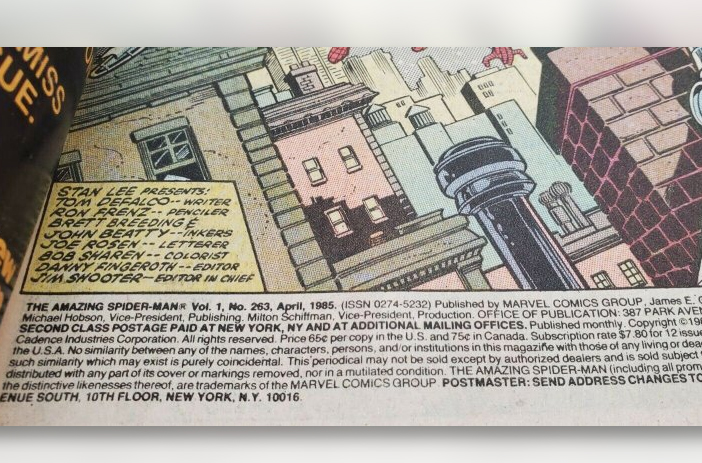
You'll generally see lines like these in the indicia as well:
- "All rights reserved."
- "The stories, characters, and incidents mentioned in this media are purely fictional. Any resemblance to others, real or imagined, are purely coincidental."
- "This media may not be sold except by authorized dealers and is sold subject to the conditions that it shall not be sold with any part of its cover or markings removed."
Critically, the indicia will have at least one, if not two, pieces of information that are important to your evaluation.
The first is the copyright date. When a comic is printed as a first edition and then, years later, a reprint second edition is created, the copyright date will reflect this. You might have comics that otherwise look identical, but one will be copyrighted in 1981, and the other will be in 2001; this tells you which is the original and which is the reprint.
The other is simply that if a comic is printed as a second edition, it will often just say "second edition" in the indicia. It may or may not say "first edition" on the first editions – since the expectation is that anything without a label is likely the first edition – but it will usually clearly state if it's a second or subsequent edition.
A Note on Famous First Editions
Above, I mentioned a particularly famous example of reprints. What is it? Specifically, it's known as Famous First Editions.
Famous First Editions were produced in the 1970s as collector's edition reprints of famous comics. Action Comics #1, Detective Comics #27; you know them, they're the most famous comics of all time. They were, in a sense, an early gimmick, a reprint of famous comics meant to cash in on growing interest in valuable comics of yesteryear.
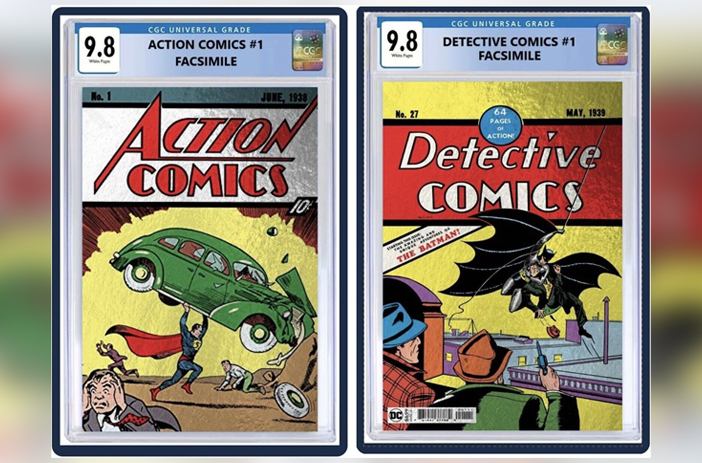
Image source: eBay
The trick with these comics is that the covers were very different from the original; they had a big border surrounding the original art saying what they were, made of a thicker cardboard material. Other than that, though, the internals of the comic were identical, including ads and other markings, making them close reproductions.
Of course, the obvious happened; people would remove the outer cover, leaving a comic that looked identical to the hyper-valuable original comic.
There's still a way to tell these cover-removed comics from legitimate, valuable comics. They're larger! Action Comics #1 was 10.16 by 6.61 inches, while the Famous First Edition copy was 10 by 13.5 inches. But, for anyone who isn't aware of the size difference, it can be a point of confusion.
Do First Editions Matter? Are They Valuable?
Well, here's the rub, isn't it?
If we're talking editions along the lines of Famous First Editions, then yes, real first editions are very important. A Famous First Edition of Action Comics #1 is only worth a few hundred bucks in general, maybe more if it's pristine, and dramatically less if it has had its cover removed. Obviously, the real first edition is extremely valuable. Other subsequent editions of Action Comics #1, like the 50th-anniversary edition or the 2017 Loot Crate edition (both worth around $50), are less.
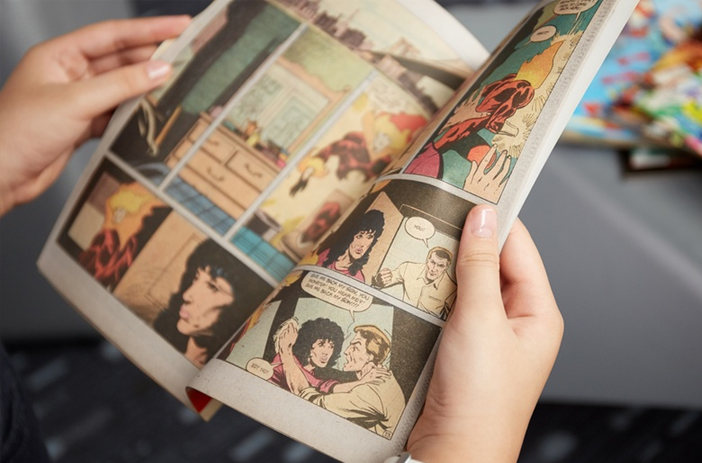
If we're talking about print runs – since most comics don't get legitimate second editions – then no, there's usually not much difference. In the case where there are real variants, then it might matter, but it's on a very case-by-case basis.
Regardless, all of this is part of properly identifying comics and appraising them. Here at Quality Comix, we're experts at it, and we can help you appraise your collection. If you want to sell, too, we're more than happy to help. Just drop us a line!

 Brent Moeshlin
Brent Moeshlin

